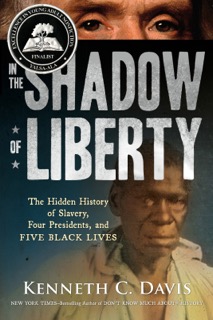[Updated 6/26/2023]
As the role of slavery in the nation’s founding is debated and the teaching of a full and accurate American history is questioned, it must be made clear that slavery was central to the nation’s beginnings and institutions. One way to examine that is by looking at the men who signed the Declaration of Independence on July 4th, 1776.
Among the men who signed the Declaration, at least forty of them enslaved people or took part in the slave trade. This is Part 7 in a series that begins here. It tells the stories of what happened to the men who pledged “our Lives, our Fortunes, and our Sacred Honor.” Read the other entries here in my blog category.

Declaration of Independence (Source: National Archives https://www.archives.gov/founding-docs/declaration
A tavern owner’s son. Two of America’s wealthiest men –both named Morris. And the first to die. The next five signers in this series. “YES” following the entry means the Signer enslaved people; “No” means he did not.
•Thomas McKean (Delaware) Son of a Pennsylvania farmer-tavern owner, McKean was a self educated, 42-year-old attorney turned politician at the time of the signing (although he did not sign in 1776).
in 1768 he was elected to the American Philosophical Society, a distinguished intellectual society founded by Benjamin Franklin. In 1769 McKean became a trustee of the Academy of Newark, the successor to Allison’s school at New London. He received honorary degrees from Princeton in 1781, Dartmouth in 1782 and Pennsylvania in 1785. Source: The Society of Descendants of the Signers of the Declaration.
A vigorous patriot, he held offices in both his native Pennsylvania and Delaware and was a key supporter of the Declaration. When another delegate from Delaware was absent and the state might vote against independence, McKean sent a horse and rider to collect fellow delegate Caesar Rodney and bring him back to vote — an 80-mile ride in a storm.
According to the National Constitution Center, as Pennsylvania judge:
McKean was a prominent early supporter of a strong judiciary, one strong enough to overturn a state law, if needed, as unconstitutional. He served for 22 years as Chief Justice for one of the most-influential state courts in the new republic.
He voted to approve the Declaration of Independence in July 1776, but he left Philadelphia before the document was signed, to rejoin the fight against the British.
Historians believe he was the last person to sign the document, either in early 1777 or as late as 1781.
McKean represented Delaware in the first two Continental Congresses, fought alongside George Washington and he briefly served as President of the Continental Congress in 1781, as British forces surrendered at Yorktown. McKean and his family were pursued by the British but never captured. A vocal advocate of the Constitution, he served in many state posts, including governor of Pennsylvania, and prospered after the war. He died in 1817 at age 83. YES
•Arthur Middleton (South Carolina) A 34-year-old plantation owner at the signing, he replaced his father –thought too conservative — in Congress. Educated in England, he became active in patriot politics. One of the few delegates to serve in the wartime militia, he was captured in Charleston in 1780, along with Thomas Heyward (Post #4) and Rutledge, two other South Carolina signers. Although his home had been destroyed he was released by the British and returned to Congress in 1781. After the war he returned to his plantation where he died at age 44 in 1787. YES
•Lewis Morris (New York) Another of the wealthy members of prominent New York families in the state’s delegation, Morris was a 50-year-old land owner with large holdings in what is now the Bronx in New York City. Although his home was assaulted by British troops during the war, it was attacked and severely damaged because of its value, not because he was a signer. Morris led troops of the militia during the vote in July, but then led the New York delegation in later signing the Declaration, making it unanimous. Morris rebuilt the family home and land holdings after the war and was a leader with Alexander Hamilton in ratification of the Constitution. He died in 1798, aged 71 and his former plantation is known today as the Morrisania section of the Bronx. YES
•Robert Morris (Pennsylvania) (No relation to Lewis Morris above.) One of the wealthiest individuals in America, he was a 42-year-old Philadelphia merchant and speculator when he signed. Born in Liverpool, he had come to America and made a fortune as a merchant, becoming the “Financier of the Revolution.” Accused of profiteering during the war, he was attacked in the Philadelphia home of fellow signer James Wilson. A delegate to the Constitutional Convention in 1787, he declined to serve as Washington’s secretary of Treasury, recommending Alexander Hamilton instead. He later became a Senator. But he lost his fortune through land speculation and was bankrupted and put in debtor’s prison. He died in poverty and relative obscurity in 1806, aged 72. YES
•John Morton (Pennsylvania) A farm boy turned surveyor, he was 52-years-old at the time of the signing. He has two key distinctions: his vote pushed Pennsylvania into the pro-independence camp and he was first signer to die.A member of the committee writing the Articles of Confederation, he fell ill with tuberculosis in 1777 and died before they were ratified, at about age 52. He left his farm and enslaved people to his wife and children who had to flee from a British attack. YES
Read more about the place of slavery in the Founding of the United States in my book IN THE SHADOW OF LIBERTY.
